Craftsmanship
Japanese Craftsmanship・Committed to Made in Japan
Presage presents a unique Japanese aesthetic to the world.
In particular, the uniqueness of the materials of its dials cannot be expressed without the advanced techniques and commitment of craftsmen. The Made in Japan quality reflects Seiko’s history of watchmaking, as well as the techniques and passion of the craftsmen.
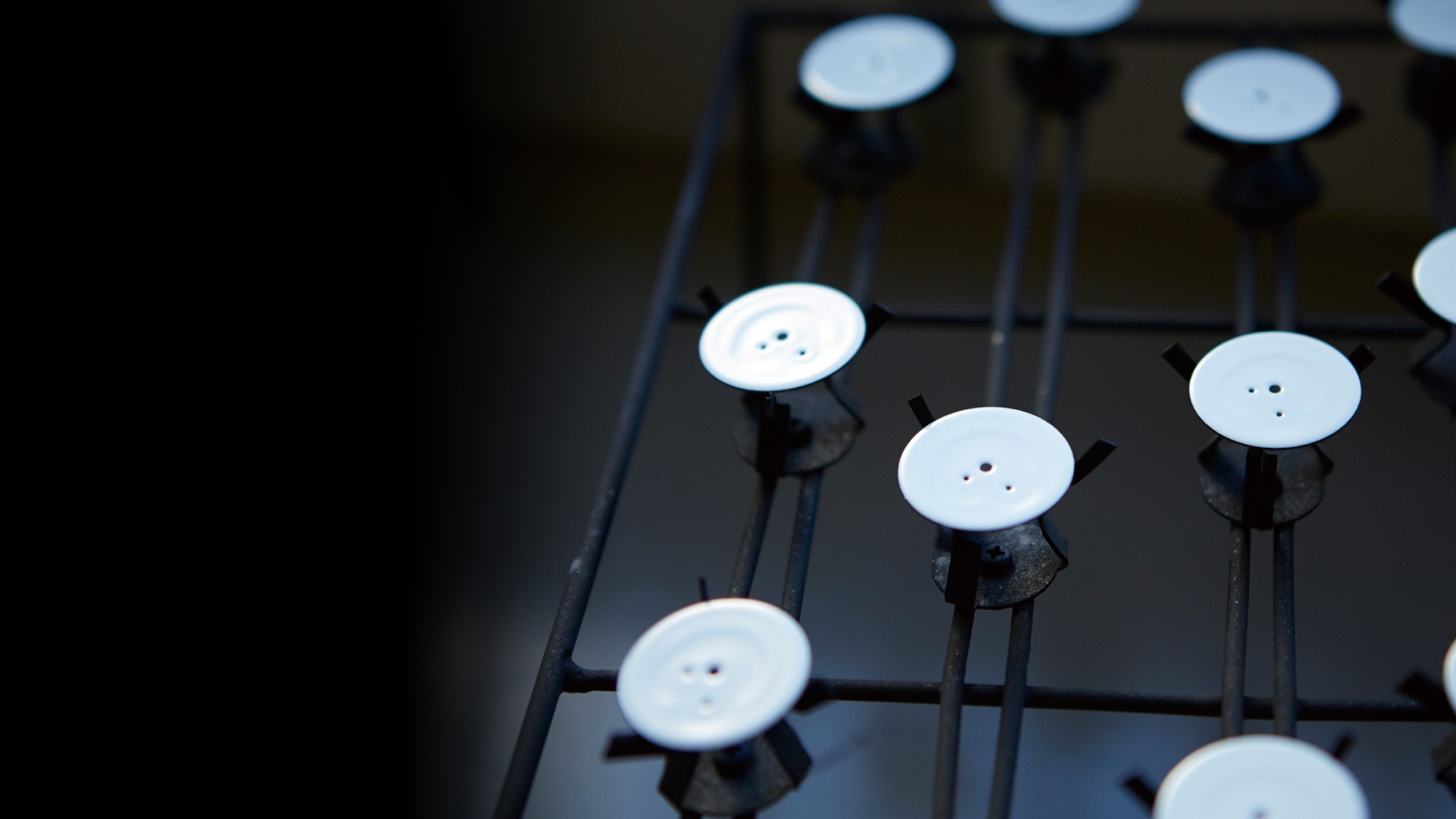
Enamel Dial
The enamel dial was also used for the Laurel, Japan’s first wristwatch. The texture of enamel captures a feeling of warmth from its unique, soft sheen. The dial appearance that retains its beautiful color tones that continue to delight the eyes of the wearer.

Enamel Craftsman: Mitsuru Yokosawa
For almost half a century, Mitsuru Yokosawa has been expanding the
boundaries of enamel, mastering time-honored techniques and gradually creating new ones. As his experience broadened, the layers of enamel he was able to apply became thinner and thinner. He is now able to apply a flawless enamel coat just 0.1 mm thin. Such precision requires not only exceptional visual acuity, but also the seemingly magical ability to make minute adjustments to the enamel composition based on fluctuations in humidity and weather conditions. Aptly, it would take the skills of a magician to create the face of the new Seiko Presage.
Artisan of Time: Enamel Craftsman
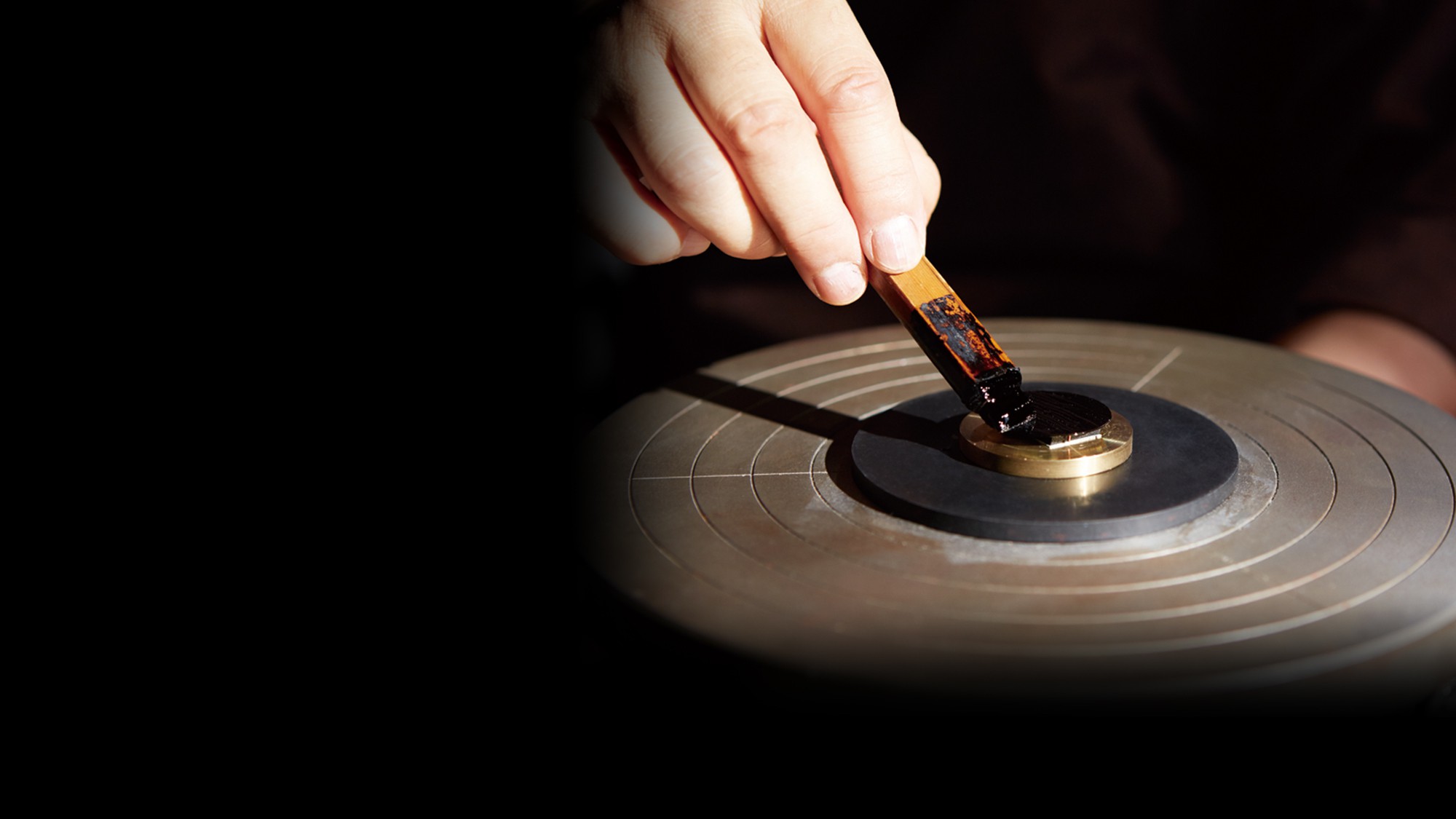
Urushi Dial
An Urushi dial created by applying multiple layers of lacquer made from the sap of the Urushi tree. It features a glossy deep black color, which is the origin of the word “shikkoku” (Urushi black).

Lacquer Artist: Isshu Tamura
Born in 1957, Isshu Tamura trained in the traditional Kaga Maki-e gold lacquer technique of Kanazawa. After honing his skills in the technique, Mr. Tamura set out to produce unparalleled original works of art. He has executed his technique in Kaga Maki-e not only in lacquerware, but also in the creation of luxury fountain pens and wristwatches which have received worldwide acclaim for their elaborate detail and fine beauty.
The Artisan of Time: Lacquer Artist
Urushi
First, the dials are made with the traditional Urushi technique in which jet black lacquer is painted by hand onto the metal base of the dial, dried and then polished. These processes are repeated several times until the craftsman has achieved the exact depth of black that he desires.
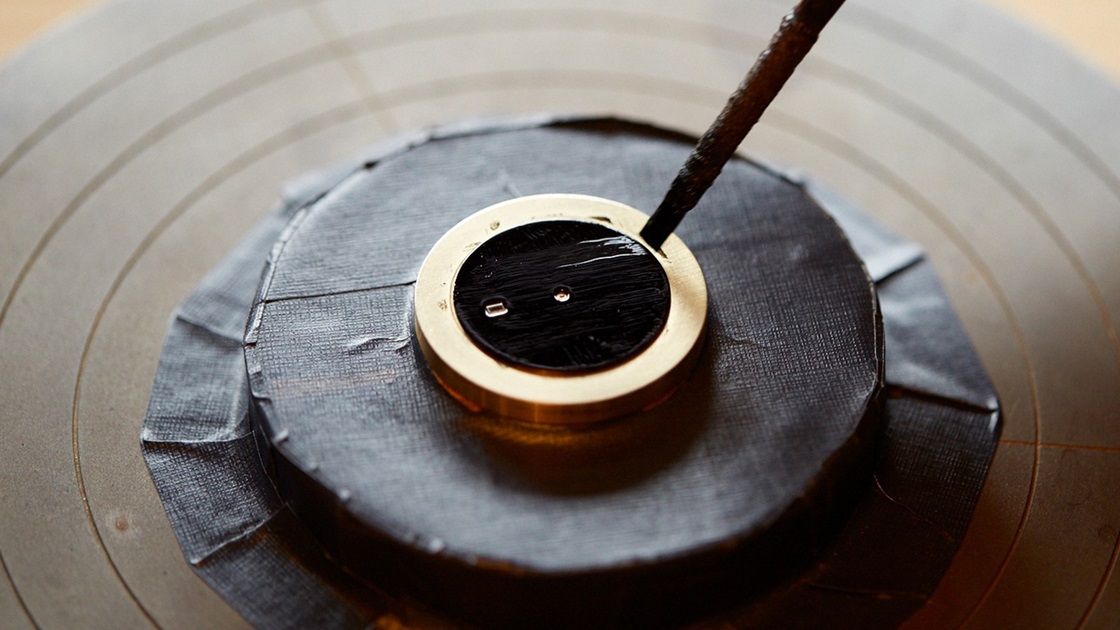
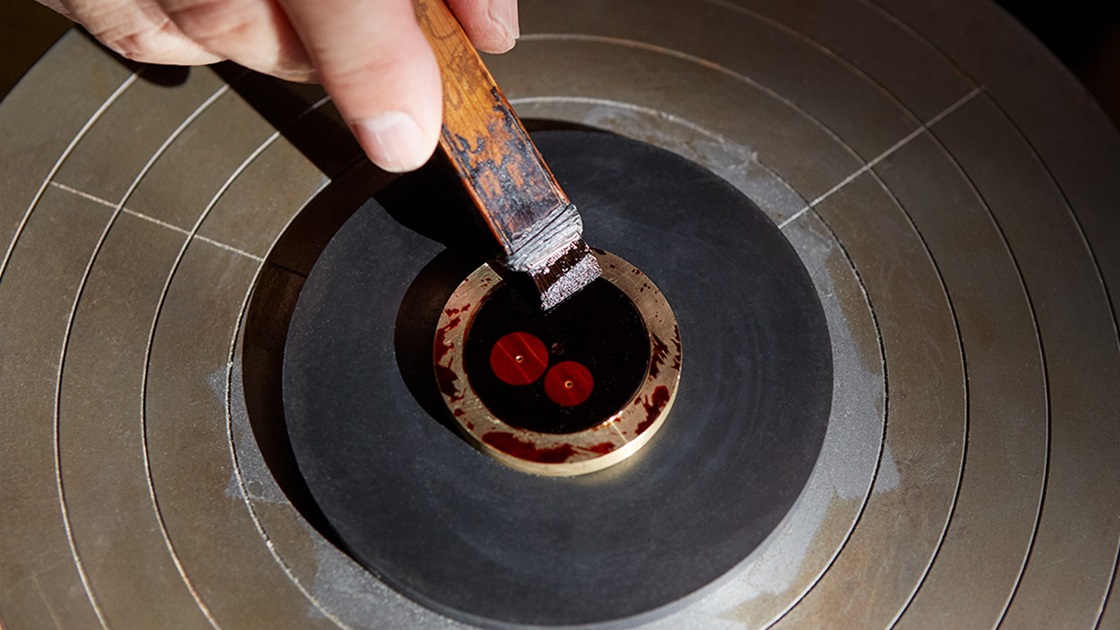
Byakudan-nuri
Using a new layer of Urushi as the binding agent, the sub-dials are then sprinkled with a layer of very fine metallic powder. The whole dial is then repeatedly painted with a red-tinged semi-transparent Urushi lacquer and then each new layer is dried and polished for as many times as the craftsman deems necessary. The effect is subtle but deeply satisfying. While the red of the sub-dials is deep, these two dials catch the light and shine when the ambient light grows brighter, just as parts of the sky catch the dawn light before others.
Maki-e
Now it is time to add the moon, using the Maki-e technique, in the form of the crescent shaped power reserve indicator. As with the Byakudan-nuri technique, the crescent is first coated with a layer of Urushi lacquer that acts as the adhesive for the fine, gilt-colored powder that is then applied to it. Once the powder is on the dial, the craftsman gently taps it to disperse the powder evenly across the surface and then uses his own specially chosen material to perfect the surface. The result is an indicator that not only reflects the shape of the crescent moon but has the moon’s shimmering, granular texture and contrasts with the smoothness of the sky against which it stands out.
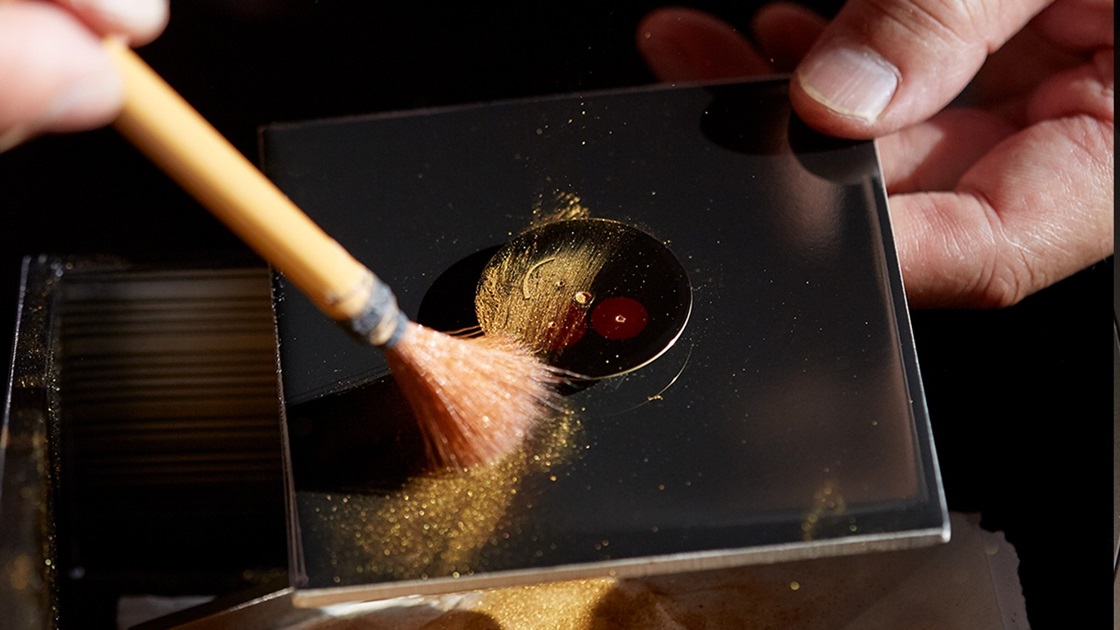

SJE081J1
Related Contents
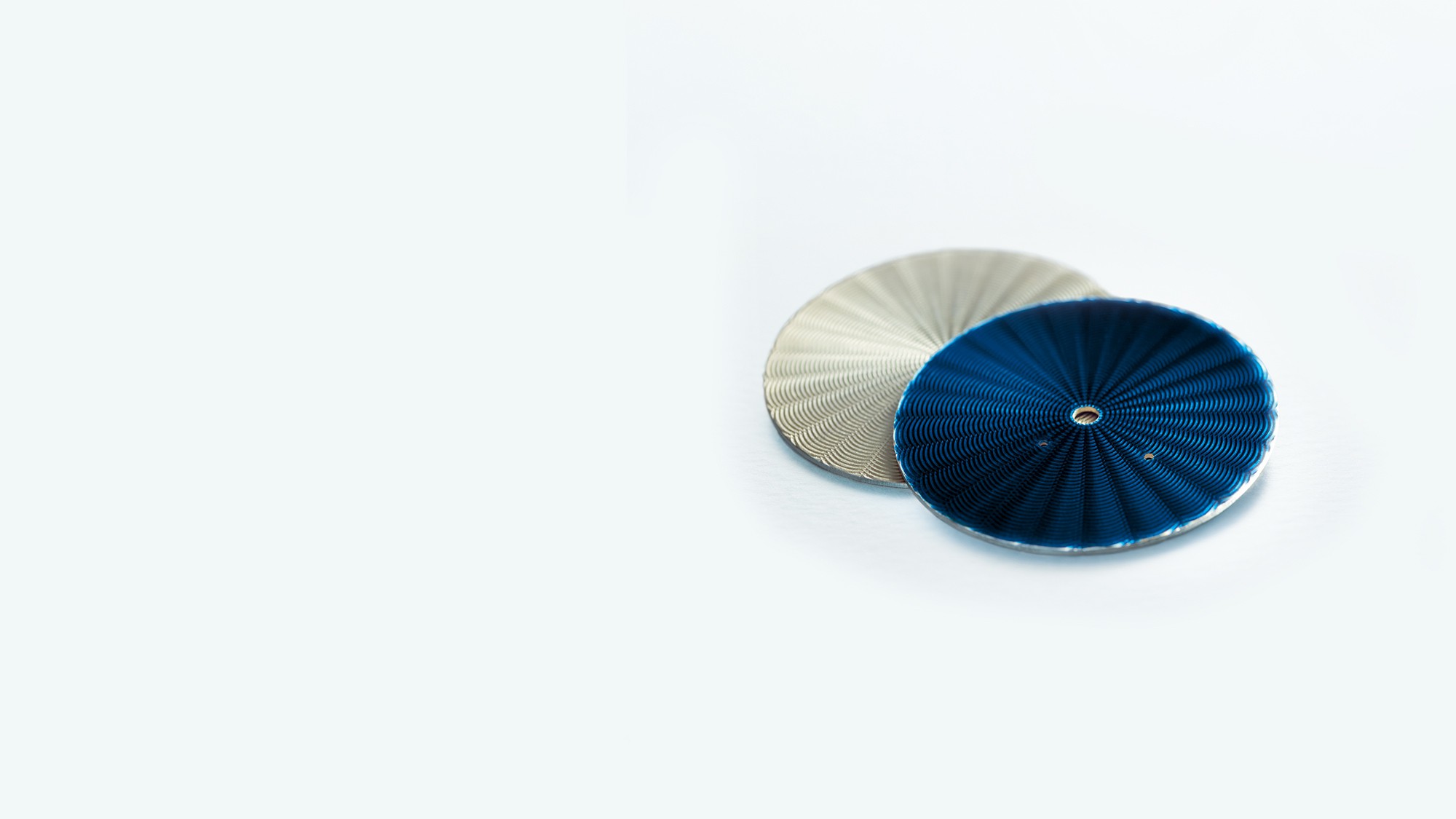
Shippo Enamel Dial
Shippo enamel is a porcelain that is said to be as beautiful as the seven treasures.
Gradations with unique depth and richness are produced through repeated applications of glaze and firing, and the sheen and shine are created by polishing after firing.

Shippo Enamel Dial Glazer: Wataru Totani
Hand-painting layer after layer of glaze onto the dial, Totani-san won't be satisfied until the enamel is perfectly even, the surface perfectly smooth, and the beauty of the pattern beneath fully revealed. For environmental reasons the glaze contains no lead, which is traditionally used to prevent bubbling. Totani-san must therefore use a microscope to evaluate the surface, and if a bubble is discovered, he will painstakingly remove it and return the surface to its ideal smoothness. When the dial is complete, he feels joy in its perfection. "Sharing this joy is my greatest satisfaction as a craftsman," he explains. "That is the beauty of Shippo Enamel."
Japan’s Timeless Traditions: The Shippo Enamel

SJE079J1
Related Contents
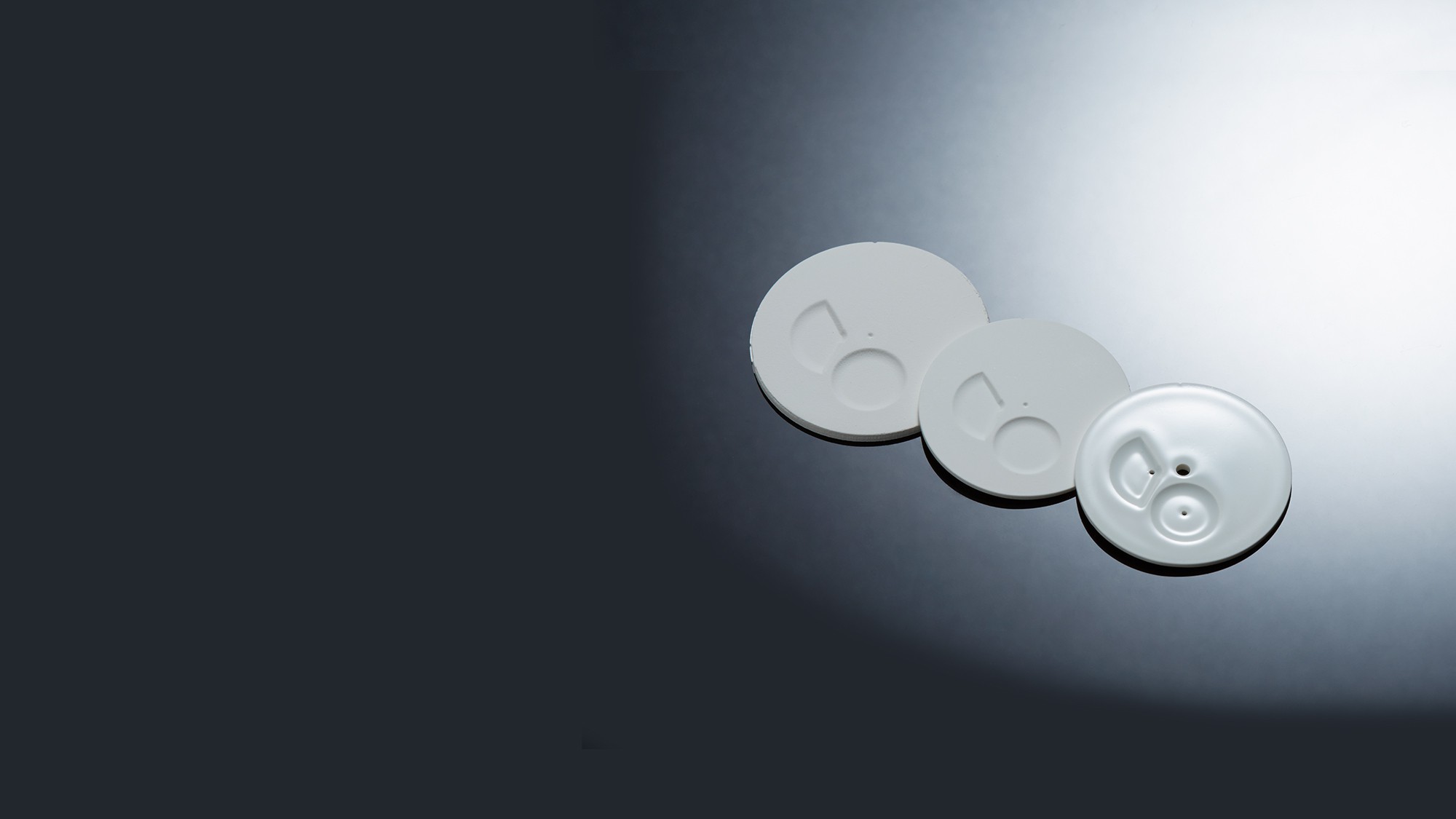
Arita Porcelain Dial
A dial made with Japan’s first porcelain, Arita porcelain, which has a history of over 400 years.
Its strength has been enhanced through newly developed materials while retaining its traditional charms such as its soft sheen.

Arita Porcelain Craftsman: Hiroyuki Hashiguchi
The new Presage porcelain dials are made by an experienced manufacturer in Arita that has been making porcelain since 1830. Hiroyuki Hashiguchi is the master craftsman and he and his colleagues have been developing the dials with the Presage team over the past few years.
Japan’s Timeless Traditions: Arita Porcelain

SPB093
















